







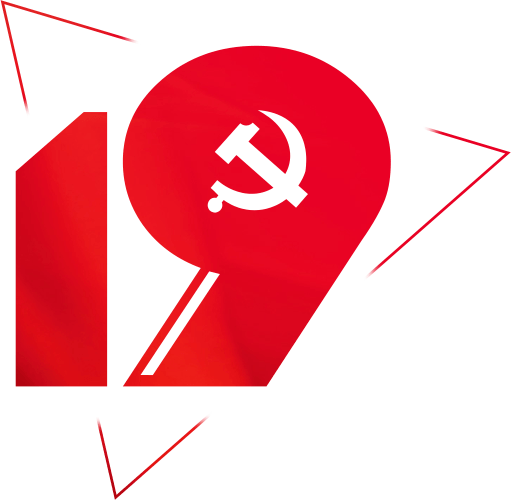









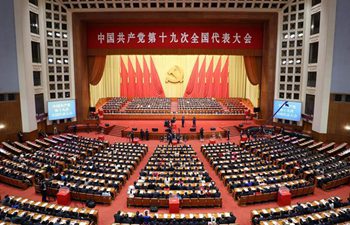 Infographic: Backbrounder: Major previous revisions to CPC Constitution
Infographic: Backbrounder: Major previous revisions to CPC Constitution 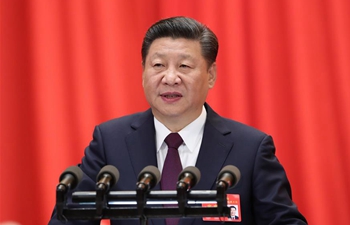 Infographic: Highlights of Xi's report to 19th CPC National Congress
Infographic: Highlights of Xi's report to 19th CPC National Congress 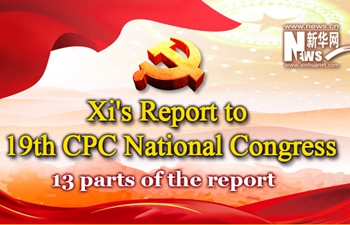 Infographic: 13 parts of Xi's report to 19th CPC National Congress
Infographic: 13 parts of Xi's report to 19th CPC National Congress 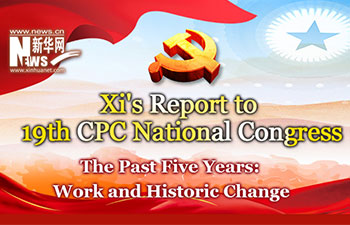 Infographic: The Past Five Years: Work and Historic Change
Infographic: The Past Five Years: Work and Historic Change 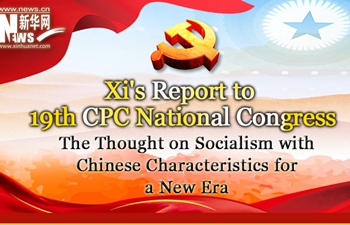 Infographic: The Thought on Socialism with Chinese Characteristics for a New Era
Infographic: The Thought on Socialism with Chinese Characteristics for a New Era 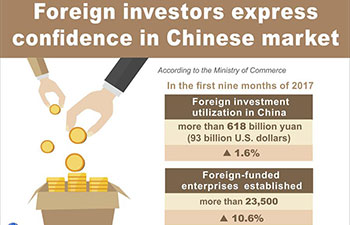 Graphics: foreign investors express confidence in Chinese market
Graphics: foreign investors express confidence in Chinese market  Graphics: highlights on improving people's wellbeing from CPC report
Graphics: highlights on improving people's wellbeing from CPC report 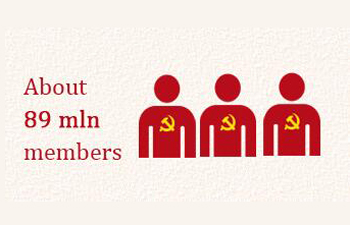 Infographic: What does it mean to be a Party member?
Infographic: What does it mean to be a Party member?  Infographic: Backbrounder: Major previous revisions to CPC Constitution
Infographic: Backbrounder: Major previous revisions to CPC Constitution  Infographic: Highlights of Xi's report to 19th CPC National Congress
Infographic: Highlights of Xi's report to 19th CPC National Congress  Infographic: 13 parts of Xi's report to 19th CPC National Congress
Infographic: 13 parts of Xi's report to 19th CPC National Congress  Infographic: The Past Five Years: Work and Historic Change
Infographic: The Past Five Years: Work and Historic Change  Infographic: The Thought on Socialism with Chinese Characteristics for a New Era
Infographic: The Thought on Socialism with Chinese Characteristics for a New Era  Graphics: foreign investors express confidence in Chinese market
Graphics: foreign investors express confidence in Chinese market  Graphics: highlights on improving people's wellbeing from CPC report
Graphics: highlights on improving people's wellbeing from CPC report  Infographic: What does it mean to be a Party member?
Infographic: What does it mean to be a Party member? The week-long 19th National Congress of the Communist Party of China (CPC) concluded Tuesday, during which the CPC Constitution was amended to include Xi Jinping Thought on Socialism with Chinese Characteristics for a New Era as a new component of the Party's guide for action.
The CPC Constitution was first unveiled at the second CPC National Congress held in 1922. At the 7th CPC National Congress in 1945, Mao Zedong Thought was established as CPC's guiding ideology.
The current version of the Constitution was endorsed at the 12th CPC National Congress in 1982, which corrected "leftist" mistakes and set economic construction for socialist modernization as the focus of the Party's work. Read more
(Source: Xinhua)
The Party Constitution stipulates that the Political Bureau, the Standing Committee of the Political Bureau and the General Secretary of the Central Committee of the Party are elected by the Central Committee in plenary session.
The General Secretary of the Central Committee must be a member of the Standing Committee of the Political Bureau, according to the Constitution. Read more
(Source: Xinhua)
The National Congress and the Central Committee it elects represent the highest leading body of the Party, according to the CPC Constitution.
When the National Congress is not in session, the Central Committee carries out its resolutions, directs the entire work of the Party and represents the Party in its external relations.
The Central Committee meets in plenary session at least once a year, and such sessions are convened by its Political Bureau. The Political Bureau reports its work to these sessions and accepts their oversight. Read more
(Source: Xinhua)
The Communist Party of China (CPC) has about 89 million members, roughly 6.8 percent of the population. Membership of the CPC entails certain rights and responsibilities.
According to the Party's Constitution, members should be a vanguard fighting for the Chinese working class. They should serve the people wholeheartedly.
The Party's admission process usually begins with a handwritten application. To be admitted a member must be 18 years old, accept the Party's program and Constitution, and pay membership dues. Read more
(Source: Xinhua)
The 96-year-old Communist Party of China (CPC), the world's largest ruling party with more than 89 million members, is set to hold its 19th national congress on Wednesday.
Following are some key facts about the CPC:
-- The CPC was founded in July 1921. A total of 12 delegates representing about 50 CPC members nationwide secretly convened at the first CPC national congress in late July in Shanghai. July 1 was later designated as anniversary of the founding of the CPC. Read more
(Source: Xinhua)
When it was established in 1921, the CPC had around 50 members. By 1949, when the People's Republic of China was founded, its membership had increased to nearly 4.5 million. Fast-forward more than 50 years and in 2016, the Party had 89.447 million members, making it the largest political party in the world, with more members than the population of Germany.
Party members are from all walks of life. Workers and farmers make up the highest share accounting for 36.95 percent, followed by professionals and management with 25.21 percent. The remaining members are officials, students and the retired. Read more
(Source: Xinhua)
The 19th National Congress of the Communist Party of China (CPC) is scheduled to open on Wednesday.
Since the Party's founding in July 1921, themes of CPC national congresses explicitly define the path and goal of the Party. Following are the themes of major CPC national congresses.
-- In 1921, a total of 12 delegates representing about 50 CPC members nationwide secretly convened at the first CPC national congress in late July in Shanghai. July 1 was later designated as anniversary of the founding of the CPC. Read more
(Source: Xinhua)
CPC members are grouped into more than 4.5 million Party branches and each branch has 20 members, on average.
According to the CPC Constitution, a branch should be established wherever there are more than three Party members.
Almost all urban neighborhoods, communities and towns have Party branches. In the workplace, about 91.3 percent of public enterprises have resident Party branches, which supervise day-to-day operations and play a part in decision-making. Party branches are also present in 67.9 percent of private enterprises and 58.9 percent of social organizations.
Local-level Party branches are the foundation of CPC governance and are integral to connecting with and serving the masses. Read more
(Source: Xinhua)
According to the CPC Constitution amended and adopted in 2007, the Party emblem and flag are the symbol and sign of the Communist Party of China. Following is a brief introduction to the CPC emblem and flag:
-- The emblem of the CPC is a design of sickle and hammer.
-- The flag of the CPC is a red flag highlighted by a golden Party emblem on it.
-- Party organizations at all levels and all Party members shall safeguard the sanctity of the Party emblem and flag. Read more
(Source: Xinhua)
The "two centenary goals" are also known as the "strategic economic and social development objectives at the new stage in the new century."
The first goal is about making China a moderately prosperous society, with the benefits felt by the well-over one billion population by the Party's centenary.
The second goal is to bring China's GDP per capita up to the level of moderately developed countries, and realize modernization by the centenary of the PRC. Read more
(Source: Xinhua)
In a state-owned or collective enterprise, the primary Party organization acts as the political nucleus and works for the operation of the enterprise, according to the CPC Constitution amended and adopted in 2007.
In a non-public economic institution, the primary Party organization carries out the Party's principles and policies, provides guidance to and oversees the enterprise in observing the laws and regulations of the state, exercises leadership over the trade union, the Communist Youth League organization and other mass organizations, rallies the workers and office staff around it, safeguards the legitimate rights and interests of all quarters and stimulates the healthy development of the enterprise. Read more
(Source: Xinhua)
The Communist Party of China (CPC) had a total of 89.447 million members at the end of 2016, the Organization Department of the CPC Central Committee announced Friday.
CPC membership increased by 688,000 from 2015, up 0.8 percent. Grassroots Party units increased by 105,000 to 4.518 million, up 2.4 percent, the department said in a communique published ahead of the 96th anniversary of CPC's founding on July 1. Read more
(Source: Xinhua)
Since the 18th Communist Party of China (CPC) National Congress in 2012, Party discipline inspections have purified the Party and improved the CPC's internal governance.
Since the congress, the Political Bureau of the CPC Central Committee and the Standing Committee of the Political Bureau of the CPC Central Committee have held 23 meetings on inspections. The central leading group for inspection has held 115 meetings.
While listening to reports on inspections, Xi Jinping, general secretary of the CPC Central Committee, stressed for more than once that the Party is fighting a pitched battle against corruption, where regional corruption is intertwined with sectoral corruption, corruption in official selection is intertwined with corruption in uses of power, and corruption in economic realms is intertwined with corruption in political realms. Read more
(Source: Xinhua)
The eight-point frugality code, introduced by the Political Bureau of the Communist Party of China (CPC) Central Committee, aims to improve Party and government officials' work style.
Since it was adopted in December 2012, great efforts have been made by the Party to rectify undesirable work styles of formalism, bureaucratism, hedonism and extravagance.
During the past five years, some 176,000 violations have been investigated, nearly 240,000 CPC officials punished, and around 128,000 officials subjected to disciplinary action, according to the CPC Central Commission for Discipline Inspection (CCDI). Read more
(Source: Xinhua)
Since the 18th Communist Party of China (CPC) National Congress in 2012, the CPC Central Committee has dedicated itself to strict party governance.
In the past five years, the CPC Central Committee has tirelessly addressed "si feng," or "the four forms of decadence" -- formalism, bureaucratism, hedonism and extravagance.
By the end of 2016, 155,300 violations against the eight-point frugality code had been investigated, according to the CPC Central Commission for Discipline Inspection (CCDI).
Among the violations, 78.2 percent took place in 2013 and 2014, 15.1 percent took place in 2015, and 6.7 percent in 2016, representing a marked decrease each year. Read more
(Source: Xinhua)
-- China is a multi-party country. Except the CPC, the country has eight non-Communist parties. They are the Revolutionary Committee of the Chinese Kuomintang, the China Democratic League, the China National Democratic Construction Association, the China Association for Promoting Democracy, the Chinese Peasants and Workers Democratic Party, the China Zhi Gong Party, the Jiu San Society, and the Taiwan Democratic Self-Government League.
-- Founded between the 1920s and the late 1940s, the non-Communist parties have a membership mainly consisting of professionals and academics from different sectors, elites among returned overseas Chinese and their relatives, people with links to the former Kuomintang, or Taiwan residents.Read more
(Source: Xinhua)